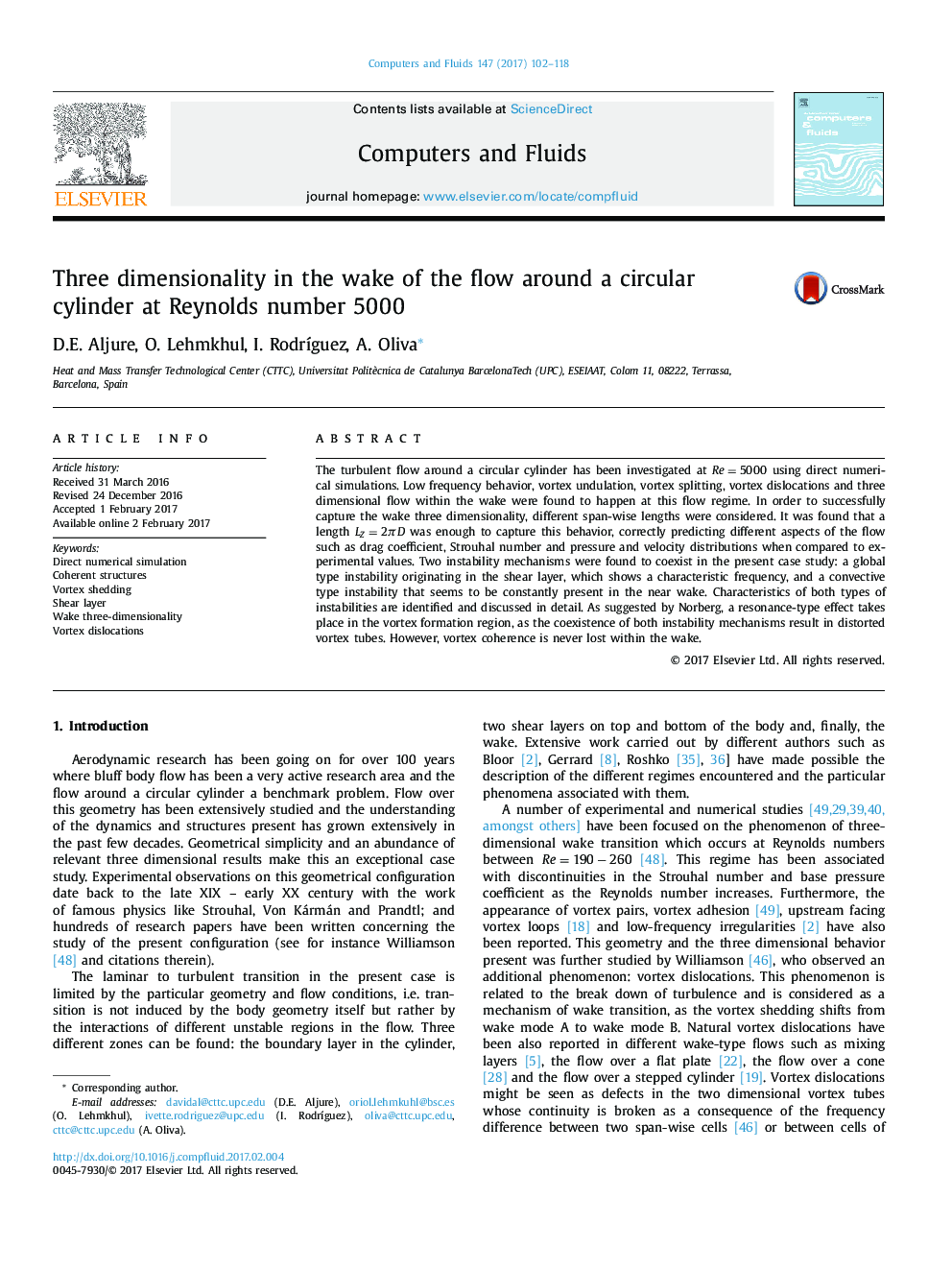| Article ID | Journal | Published Year | Pages | File Type |
|---|---|---|---|---|
| 5011904 | Computers & Fluids | 2017 | 17 Pages |
Abstract
The turbulent flow around a circular cylinder has been investigated at Re=5000 using direct numerical simulations. Low frequency behavior, vortex undulation, vortex splitting, vortex dislocations and three dimensional flow within the wake were found to happen at this flow regime. In order to successfully capture the wake three dimensionality, different span-wise lengths were considered. It was found that a length LZ=2ÏD was enough to capture this behavior, correctly predicting different aspects of the flow such as drag coefficient, Strouhal number and pressure and velocity distributions when compared to experimental values. Two instability mechanisms were found to coexist in the present case study: a global type instability originating in the shear layer, which shows a characteristic frequency, and a convective type instability that seems to be constantly present in the near wake. Characteristics of both types of instabilities are identified and discussed in detail. As suggested by Norberg, a resonance-type effect takes place in the vortex formation region, as the coexistence of both instability mechanisms result in distorted vortex tubes. However, vortex coherence is never lost within the wake.
Related Topics
Physical Sciences and Engineering
Engineering
Computational Mechanics
Authors
D.E. Aljure, O. Lehmkhul, I. RodrÃguez, A. Oliva,
